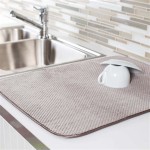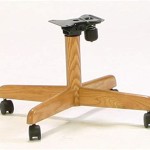Vinyl flooring is a great option for kitchens, offering a stylish, modern look while being durable and easy to maintain. It’s also an affordable choice, making it a popular choice for many homeowners. In this guide, we’ll take a look at the benefits of vinyl flooring for kitchens, what types are available, and how to install them.
Benefits of Vinyl Flooring for Kitchens
Vinyl flooring for kitchens has many advantages over other types of flooring, making it a great choice for any home. Here are some of the key benefits of vinyl flooring for kitchens:
- It is durable and easy to maintain.
- It is resistant to water and spills.
- It is available in a wide range of colors and patterns.
- It is easy to install, and can even be done by a DIYer.
- It is an affordable option.
Types of Vinyl Flooring For Kitchens
Vinyl flooring for kitchens comes in a variety of styles and designs, making it easy to find the perfect option for your kitchen. Here are some of the most popular types of vinyl flooring for kitchens:
- Vinyl Sheet Flooring – Vinyl sheet flooring is the most affordable option, and it can be installed easily in any kitchen. It’s available in a wide range of colors and patterns, allowing you to customize the look of your kitchen. It is also very durable and easy to clean.
- Vinyl Plank Flooring – Vinyl plank flooring is similar to vinyl sheet flooring, but it is designed to resemble hardwood planks. It is a great way to get the look of hardwood without the price tag. It is also easy to install and easy to clean.
- Vinyl Tile Flooring – Vinyl tile flooring is a great option for those who want a unique look in their kitchen. It is available in a variety of colors, patterns, and textures, allowing you to create a truly unique space. It is also easy to install and easy to clean.
How to Install Vinyl Flooring For Kitchens
Installing vinyl flooring for kitchens can be done by a DIYer, but it’s always best to get help from a professional if you are unsure of what you are doing. Here are the steps for installing vinyl flooring for kitchens:
- Prepare the Subfloor – The first step is to make sure the subfloor is clean and level. Use a level and a broom to ensure the subfloor is even and free of any debris.
- Lay Down the Vinyl – Once the subfloor is ready, you can start laying down the vinyl. Start in one corner and work your way out, making sure to leave a small gap between the walls and the vinyl.
- Secure the Vinyl – Once the vinyl is laid down, you can use a roller to secure it to the subfloor. Make sure to roll in both directions to ensure it is properly secured.
- Finishing Touches – Once the vinyl is secure, you can add any finishing touches, such as trim or baseboards. You can also add a sealant to protect the vinyl and make it easier to clean.
Conclusion
Vinyl flooring for kitchens is a great option for anyone looking for a stylish, durable, and affordable flooring option. It is available in a variety of styles and designs, making it easy to find the perfect option for your kitchen. It is also easy to install and maintain, making it a great choice for any home. We hope this guide has helped you understand the benefits of vinyl flooring for kitchens and how to install it.















Related Posts








